When it comes to enjoying the joys of owning an above-ground pool, maintenance and cleaning are an essential part of the process. A well-maintained one means crystal clear water that’s inviting for swimmers, a healthier environment that discourages the growth of harmful bacteria, and longer-lasting pool equipment. It also guarantees you will avoid unnecessary costly repairs down the line. But how do you ensure your property remains in pristine condition? This comprehensive guide will take you through the steps you need to take to keep your above ground pool clean and properly maintained.
Essential Pool Maintenance Tools and Supplies
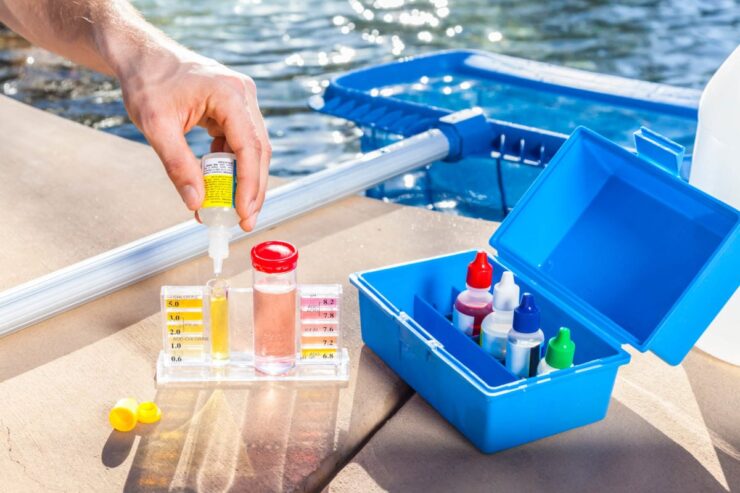
Just as a mechanic wouldn’t work without their tools, pool maintenance requires specific equipment to keep it in optimal shape. Here are some must-have maintenance tools:
Skimmers and Nets: These tools help remove debris, such as leaves and bugs, from the water surface.
Brushes: For scrubbing the pool walls and floor, removing algae, and preventing stains.
Vacuum: This device sucks up dirt from the floor.
Water Testing Kit: To regularly test your liquid and ensure it’s chemically balanced.
Chemicals: These include chlorine, bromine, algaecides, and pH balancers.
While this may seem like a lot, each tool and supply plays a crucial role in maintaining the cleanliness and safety of your water. If you can’t do it on your own, hire professionals such as centralpools.co.nz, the best fibreglass pool builder in Whangamata NZ.
Regular Cleaning Routine
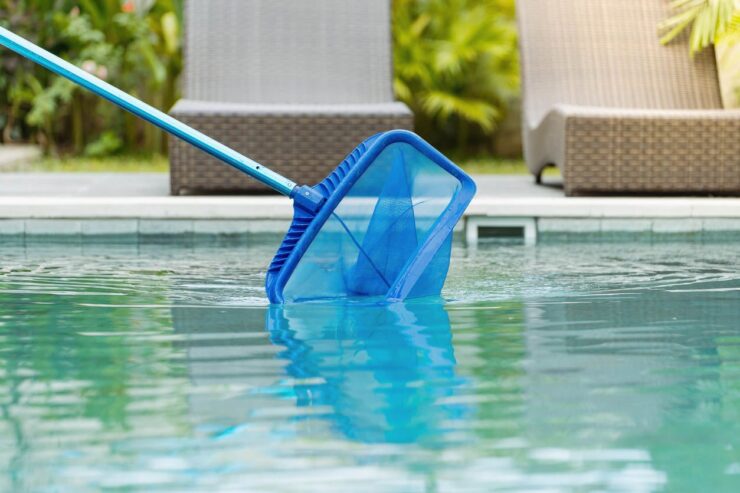
Consistent cleaning is key to maintaining a sparkling and hygienic pool. Here’s a step-by-step routine:
Skim the Surface: Using your skimmer, clear out any floating debris daily. This prevents them from sinking and making your pool dirty.
Brush the Pool: Once or twice a week, use a brush to scrub the walls and floor. This helps remove algae and prevent stains.
Vacuum the Pool: After brushing, vacuum it to remove any dislodged debris.
Empty the Baskets: Regularly empty and clean the skimmer and pump baskets to ensure good water flow.
By following this routine, you’ll keep your pool in top condition and ready for use at all times.
Water Chemistry and Testing
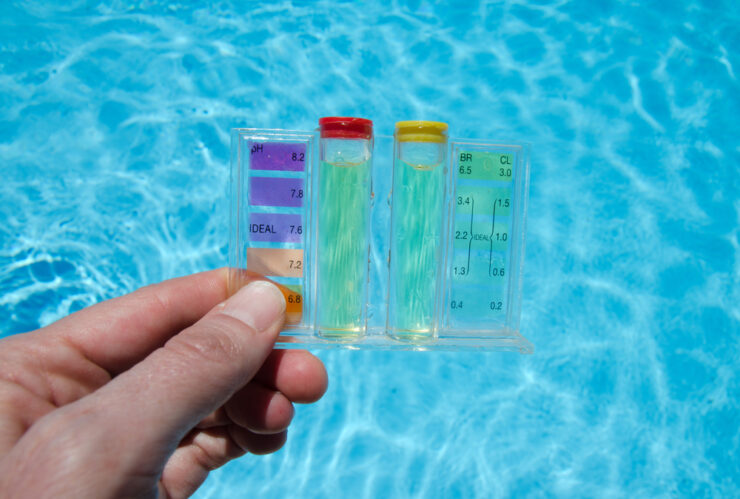
Maintaining the right water chemistry is crucial for a safe and balanced pool environment. By conducting regular tests, you can assess the levels of chemicals in your water and adjust them as necessary. A good testing kit should measure free chlorine, pH, total alkalinity, and calcium hardness. Here’s how to use it:
Fill the vials in your test kit with water.
Add the indicated reagents, then shake the vials to mix.
Compare the color of the water in your vials to the color chart provided in your kit.
These tests should be conducted at least once a week, and adjustments made as needed to keep the water balanced.
Balancing Pool Chemicals
Achieving the right balance of chemicals in your pool is vital for preventing algae, bacteria, and unsightly water conditions.
Chlorine: This keeps your pool sanitized by killing bacteria and algae. Keep your free chlorine level between 1.0 – 3.0 ppm.
pH: This measures how acidic or basic your water is. Maintain a pH level between 7.2 – 7.8.
Alkalinity: This acts as a pH buffer, preventing drastic pH swings. Aim for total alkalinity between 80 – 120 ppm.
Calcium Hardness: This prevents plaster damage and water cloudiness. Ideal calcium hardness levels range from 200 – 400 ppm.
Remember, always add chemicals to water, not water to chemicals, and always handle them with care, using gloves and goggles.
Pool Shocking and Algae Prevention
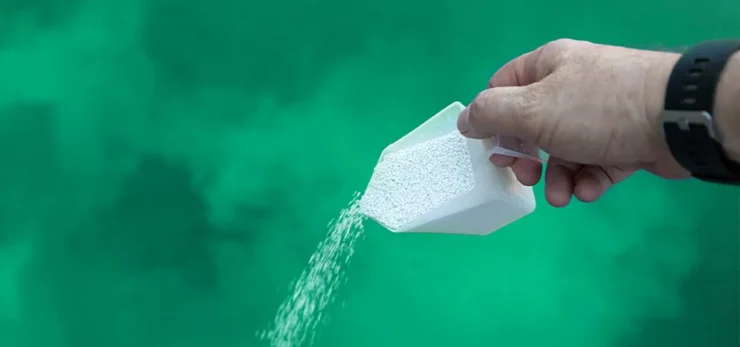
Pool shocking is the process of adding a large dose of chlorine to your water to kill bacteria and other organic matter. It helps maintain water clarity and prevent chloramine formation, which causes eye irritation and unpleasant odors. Ideally, they should be shocked once a week during peak usage, or at least every two weeks.
Algae can be a nuisance to pool owners, but with proper chemical balance, routine brushing, and occasional use of algaecide, you can keep your water algae-free.
Filtration System Maintenance
A well-functioning filtration system is crucial in maintaining a clean pool. Regularly clean and backwash your filter according to the manufacturer’s instructions to ensure it’s working effectively.
For sand filters, backwash when the pressure gauge reads 8-10 psi over the starting level. For cartridge filters, clean them when the pressure rises 8-10 psi, or at least every two months. DE filters require backwashing and recharging with fresh DE powder when pressure increases by 8-10 psi.
Handling Leaves and Debris
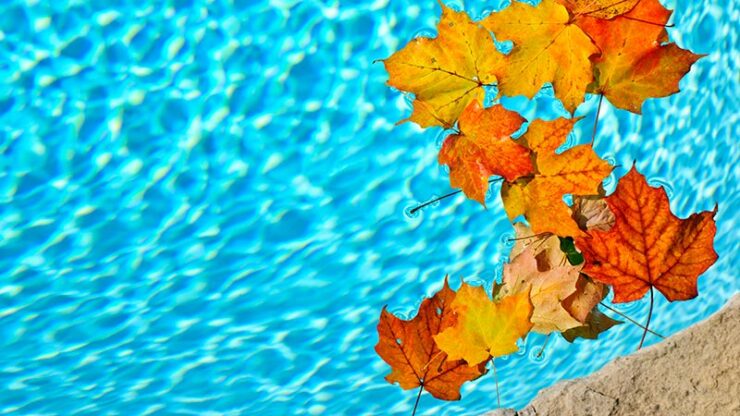
Pool covers and leaf nets are useful tools to prevent leaves and debris from entering the water, especially during fall. They save you a lot of cleaning time and keep it looking neat. For any debris that does make it into the water, use a leaf rake or manual vacuum to remove it.
Winterizing It
At the end of the swimming season, it’s essential to properly winterize your pool to prevent damage from freezing temperatures.
Balance your water chemistry
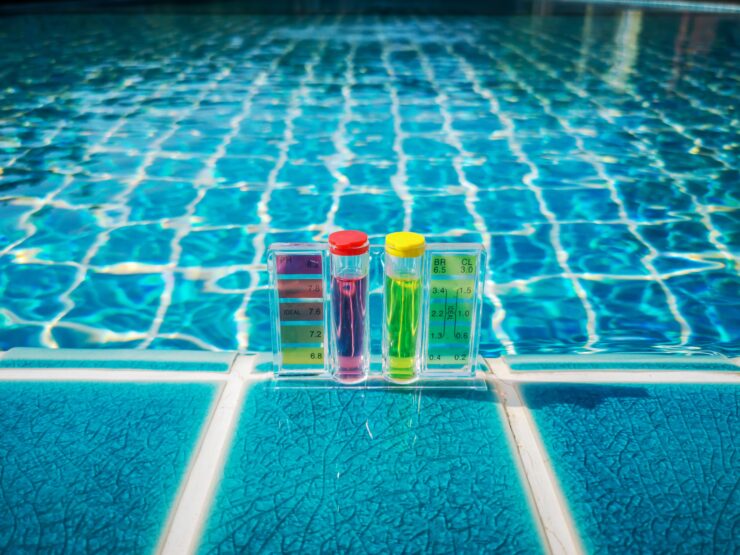
Lower the water level to just below the skimmer mouth.
Drain all pumping, filtering, heating, and chlorinating equipment.
Add winterizing chemicals, then cover the pool.
By taking these steps, your pool will be ready to go when swimming season rolls around again.
Troubleshooting and Common Pool Issues
Common pool issues include cloudy water, low water levels, and equipment malfunctions. Cloudy water is often due to unbalanced water chemistry or a dirty filter. Test and adjust your water chemistry, and clean or replace your filter as needed. If your water level is falling faster than normal, check for leaks in the pool liner, plumbing system, or around the pump.
Safety Measures and Guidelines
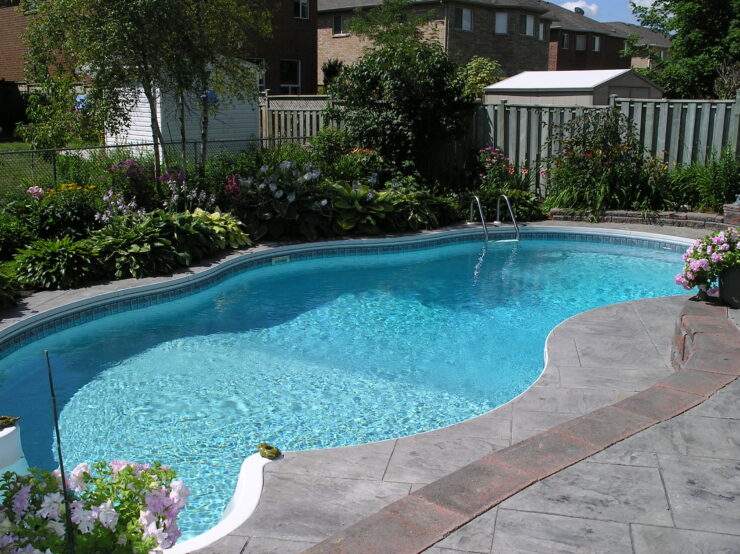
Pool safety is paramount. Establish and enforce rules, like no running or diving. Supervise children at all times, and install pool barriers to prevent unsupervised access. Regularly check and maintain its safety equipment such as life rings and first aid kits.
Conclusion
Proper pool maintenance requires regular cleaning, balancing water chemistry, using the right tools and supplies, addressing common issues, and adhering to safety measures. By following this guide, you can enjoy a clean, safe, and enjoyable swimming experience throughout the swimming season. The effort you put into maintaining your pool will ensure it remains an inviting oasis for friends and family. Dive in!

